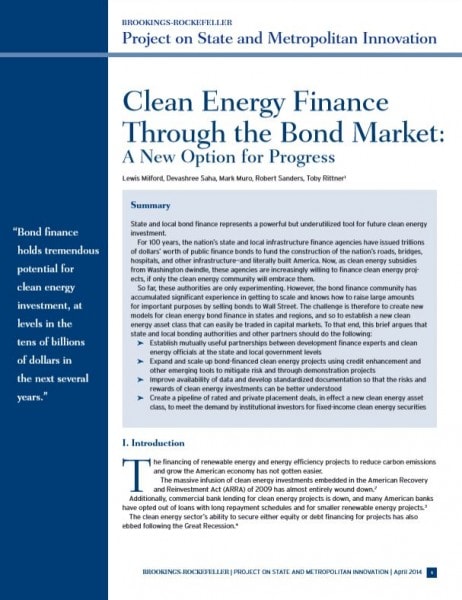Clean Energy Finance through the Bond Market: A New Option for Progress
April 16, 2014
Lew Milford, Robert Sanders, Toby Rittner, Devashree Saha, Mark Muro | Clean Energy Group, Council of Development Finance Agencies, Brookings Institute
State and local bond finance represents a powerful but underutilized tool for future clean energy investment.
For 100 years, the nation’s state and local infrastructure finance agencies have issued trillions of dollars’ worth of public finance bonds to fund the construction of the nation’s roads, bridges, hospitals, and other infrastructure—and literally built America. Now, as clean energy subsidies from Washington dwindle, these agencies are increasingly willing to finance clean energy projects, if only the clean energy community will embrace them.
So far, these authorities are only experimenting. However, the bond finance community has accumulated significant experience in getting to scale and knows how to raise large amounts for important purposes by selling bonds to Wall Street. The challenge is therefore to create new models for clean energy bond finance in states and regions, and so to establish a new clean energy asset class that can easily be traded in capital markets. To that end, this brief argues that state and local bonding authorities and other partners should do the following:
- Establish mutually useful partnerships between development finance experts and clean energy officials at the state and local government levels
- Expand and scale up bond-financed clean energy projects using credit enhancement and other emerging tools to mitigate risk and through demonstration projects
- Improve the availability of data and develop standardized documentation so that the risks and rewards of clean energy investments can be better understood
- Create a pipeline of rated and private placement deals, effect a new clean energy asset class, to meet the demand by institutional investors for fixed-income clean energy securities.





